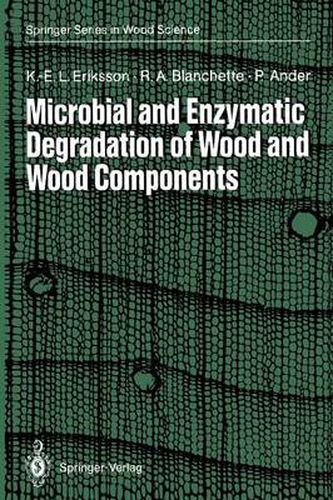Readings Newsletter
Become a Readings Member to make your shopping experience even easier.
Sign in or sign up for free!
You’re not far away from qualifying for FREE standard shipping within Australia
You’ve qualified for FREE standard shipping within Australia
The cart is loading…






This title is printed to order. This book may have been self-published. If so, we cannot guarantee the quality of the content. In the main most books will have gone through the editing process however some may not. We therefore suggest that you be aware of this before ordering this book. If in doubt check either the author or publisher’s details as we are unable to accept any returns unless they are faulty. Please contact us if you have any questions.
The oil crisis during the 1970s turned interest towards the utilization of renewable resources and towards lignocellulosics in particular. The 1970s were also the cradle period of biotechnology, and the years when biotechnical utilization of lignocellulosic waste from agriculture and forestry gained priori ty. This was a logical conclusion since one of nature’s most important biologi cal reactions is the conversion of wood and other lignocellulosic materials to carbon dioxide, water and humic substances. However, while biotechnology in other areas like medicine and pharmacology concerned production of expen sive products on a small scale, biotechnical utilization and conversion of ligno cellulosics meant production of inexpensive products on a large scale. Biotechnical utilization of lignocellulosic materials is therefore a very difficult task, and the commercial utilization of this technology has not progressed as rapidly as one would have desired. One reason for this was the lack of basic knowledge of enzyme mechanisms involved in the degradation and conversion of wood, other lignocellulosics and their individual components. There are also risks associated with initiating a technical development before a stable platform of knowledge is available. Several of the projects started with en thusiasm have therefore suffered some loss of interest. Also contributing to this failing interest is the fact that the oil crisis at the time was not a real one. At present, nobody predicts a rapid exhaustion of the oil resources and fuel production from lignocellulosics is no longer a high priority.
$9.00 standard shipping within Australia
FREE standard shipping within Australia for orders over $100.00
Express & International shipping calculated at checkout
This title is printed to order. This book may have been self-published. If so, we cannot guarantee the quality of the content. In the main most books will have gone through the editing process however some may not. We therefore suggest that you be aware of this before ordering this book. If in doubt check either the author or publisher’s details as we are unable to accept any returns unless they are faulty. Please contact us if you have any questions.
The oil crisis during the 1970s turned interest towards the utilization of renewable resources and towards lignocellulosics in particular. The 1970s were also the cradle period of biotechnology, and the years when biotechnical utilization of lignocellulosic waste from agriculture and forestry gained priori ty. This was a logical conclusion since one of nature’s most important biologi cal reactions is the conversion of wood and other lignocellulosic materials to carbon dioxide, water and humic substances. However, while biotechnology in other areas like medicine and pharmacology concerned production of expen sive products on a small scale, biotechnical utilization and conversion of ligno cellulosics meant production of inexpensive products on a large scale. Biotechnical utilization of lignocellulosic materials is therefore a very difficult task, and the commercial utilization of this technology has not progressed as rapidly as one would have desired. One reason for this was the lack of basic knowledge of enzyme mechanisms involved in the degradation and conversion of wood, other lignocellulosics and their individual components. There are also risks associated with initiating a technical development before a stable platform of knowledge is available. Several of the projects started with en thusiasm have therefore suffered some loss of interest. Also contributing to this failing interest is the fact that the oil crisis at the time was not a real one. At present, nobody predicts a rapid exhaustion of the oil resources and fuel production from lignocellulosics is no longer a high priority.